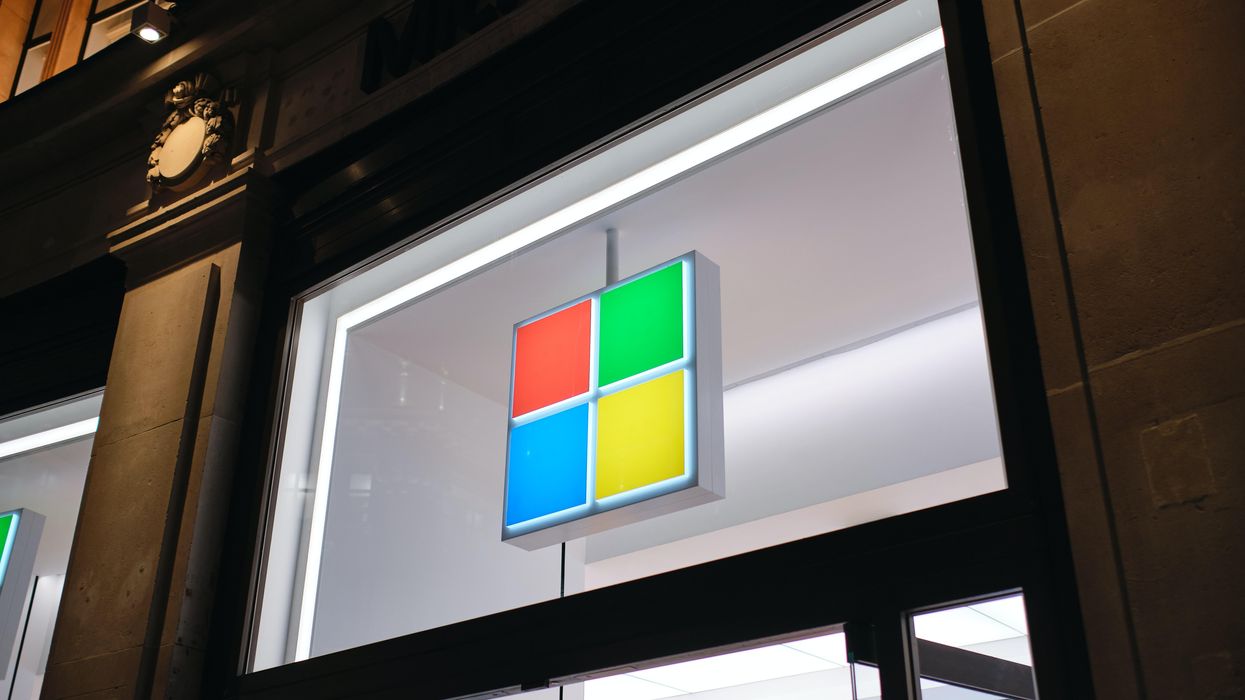Marketing
10 January 2023
Microsoft makes a big move in retail media
Tech giant launches capabilities for retailers to help brands advertise onsite, across the web and in-store.

Photo by Turag Photography on Unsplash
Tech giant launches capabilities for retailers to help brands advertise onsite, across the web and in-store.

Microsoft is making a bigger move into retail media as it seeks to beef up advertising offerings for brands and retailers.
On Tuesday, the tech giant shared details on new capabilities for retailers seeking to use their first-party data for advertising on their websites, other digital channels and on in-store signs.
First launched in 2019 following an acquisition, Microsoft’s PromoteIQ is powering advertising on Sephora’s website, and is adding capabilities for Kroger’s retail media arm. With a slate of new releases, the company said it is building out a complete omnichannel retail media stack for retailers.
It comes as retail media continues to gain favor among brands and retailers for its ability to realize advantages in ecommerce marketplaces and use first-party data from purchases and loyalty programs to reach shoppers based on their actual profile. eMarketer projects retail media spend will reach $61.2 billion in 2024 in the U.S., which is nearly 20% of total digital ad spend.
Retail media has gained steam as Amazon showed how search advertising through its massive and much-visited marketplace could power a massive part of its business, and Apple's iOS changes made first-party data more valuable in targeting. A host of other retailers have launched retail media networks in the last year, but they work with technology companies to power various capabilities and access different types of inventory. Microsoft is one of those providers, and now it is looking to get bigger. It helps that the tech giant can draw on an existing ad network that powers search-related advertising on Bing, as well as its other properties. With the new capabilities, it is looking to create a single platform through which retailers can reach multiple channels.
Here’s a look at what Microsoft is announcing:
Microsoft shared on Tuesday that it will roll out a new network to help retailers offer brand advertising on their websites.
In a blog post, Microsoft announced the pilot release of the Microsoft Retail Advertising Network with the goal of helping retailers monetize inventory and drive incremental traffic to their websites. This is achieved by partnering with “hundreds or even thousands” of brand advertisers that are in the Microsoft Advertising ecosystem.
“Retailers can hit a saturation point where they’re unable to get more demand from their largest brand partners,” said Kya Sainsbury-Carter, VP of global partner at retail media at Microsoft Advertising. “This is where the Microsoft Retail Advertising Network comes in, helping retailers unlock new budget from the broader array of Microsoft Advertising brands that also sell on a retailer’s site.”
Kohl’s, the department store retailer with an ecommerce app and website, is an initial adopter of the network, Microsoft said.
Through the network, brands that use the Microsoft Advertising platform will be able to set up campaigns specifically for retailer websites, as well as on Microsoft properties and partner networks. Microsoft said it automatically matches retailers and corresponding brands, while directing interested shoppers directly to retailer websites.
Another new tool will allow retailers to use their data to help brands reach shoppers beyond their own website.
Promote IQ Offsite is a new feature that will allow retailers to use first-party data from retailers for third-party inventory on the open and social web. In February, retailers will be able to use this platform to put their first party data alongside data from Microsoft and lookalike audiences from Facebook and Instagram owner Meta for targeting.
BJ’s is already using Microsoft’s onsite and offsite capabilities for its recently launched retail media offering, called BJ’s Media Edge.
In particular, Microsoft sees potential to deploy this offering for Connected TV (CTV), which is advertising through streaming platforms. In this context, it’s worth noting that Microsoft is powering Netflix’s ad-supported tier.
“By leveraging shopper data, retailers can help brands to target and evaluate the impact of their CTV ads – a capability that’s expected with other digital media and across devices – now on the biggest screen in the house – the TV,” Sainsbury-Carter wrote. “Retailers will be able to derive actionable insights through unified reporting and attribution, an incredibly important measure whether in a boom time or in times of economic uncertainty.”
Another surface where advertisers are looking to expand digital inventory is at brick-and-mortar stores. This type of advertising connects physical and digital. In-store ads are served over the web, then appear on connected signage at point-of-sale systems and within aisles. Microsoft said it completed a proof-of-concept for an in-store offering. The company intends to launch this capability within the next 12 months.
On the Move has the latest from Amazon, Lovesac and more.
Ryan Cohen is executive chairman of GameStop. (Photo by Flickr user Bill Jerome, used under a Creative Commons) license.
This week, leadership is changing at GameStop, Sorel and Beautycounter. Meanwhile, key executives are departing at Amazon, Wayfair and Lovesac.
Here’s a look at the latest shuffles:
GameStop announced the termination of Matthew Furlong as CEO on Wednesday. A brief statement did not provide a reason for the firing.
With the move, Chewy founder and activist investor Ryan Cohen was named executive chairman of the video game retailer. Cohen will be responsible for capital allocation and overseeing management.
It came as the company reported a 10% year-over-year decline in net sales for the first quarter. Meanwhile, the company’s net loss improved by 62%.
In an SEC filing, GameStop further added this “We believe the combination of these efforts to stabilize and optimize our core business and achieve sustained profitability while also focusing on capital allocation under Mr. Cohen’s leadership will further unlock long-term value creation for our stockholders.”
Cohen was revealed as GameStop's largest shareholder when he disclosed a 10% stake in the retailer in 2020. GameStop went on to become a leading name in the meme stock rise of 2021.
Mark Nenow is stepping down as president of the Sorel brand in order to focus on his health.
After rising to the role in 2015, Nenow spearheaded a transformation of Columbia Sportswear-owned Sorel from a men’s workwear brand to a fashion-focused brand that led with a women’s offering of boots, sandals and sneakers.
“Mark led the brand to sales of $347 million in net sales in 2022,” said Columbia Sportswear CEO Tim Boyle, in a statement. “His leadership has been invaluable to this company, and we wish him the very best.”
Columbia will conduct a search for Nenow’s replacement. Craig Zanon, the company’s SVP of emerging brands, will lead Sorel in the interim.
Beautycounter appointed board member Mindy Mackenzie as interim CEO, succeeding Marc Rey. According to the brand, Rey and the board “mutually decided to transition to a new phase of leadership for Beautycounter.”
McKenzie, a former executive at Carlyle, McKinsey and Jim Beam, will lead the company as it conducts a search for a permanent CEO. Additionally, former Natura & Co CEO Roberto Marques will join Beautycounter’s board as chair.
As part of the transition, Nicole Malozi is also joining the company as chief financial officer. She brings experience from Tatcha, Nike, and DFS Group Limited.
Melissa Nick, a VP of customer fulfillment for North America at Amazon, will leave the company, effective June 16, CNBC reported. Nick joined the company in 2014, and oversaw a region that included nearly 300 fulfillment centers. After doubling its supply chain footprint during the pandemic, Amazon recently reorganized its fulfillment operations to take a regional approach, as opposed to a national model that often resulted in items shipping across the country.

Jon Blotner (Courtesy photo)
Steve Oblak will retire from the role of chief commercial officer at home goods marketplace Wayfair. With the move, Jon Blotner will be promoted to chief commercial officer.
"Steve has served as a critical part of our leadership team and played a pivotal role in Wayfair's growth, helping us grow from a $250 million business when he joined to $12 billion in net revenue today,” said Wayfair CEO Niraj Shah, in a statement. “He oversaw countless milestones, from helping to launch the Wayfair brand as we brought together hundreds of sites into a single platform, to launching new categories, business lines, and geographies while overseeing our North American and European businesses, to leading our debut into physical retail.”
Blotner previously oversaw exclusive and specialty retail brands, as well as digital media at Wayfair. Before joining the company, he served as president of Gemvara.com prior to its 2016 acquisition by Berkshire Hathaway.
Furniture retailer Lovesac said Donna Dellomo will retire as EVP and CFO, and move to an advisory role, effective June 30. Dellomo was with Lovesac for six years.
Keith Siegner was appointed as the next EVP and CFO. He brings experience as CFO of esports company Vindex, as well as executive roles at Yum! Brands, UBS Securities and Credit Suisse.
Additionally, Jack Krause will retire from the role of chief strategy officer, effective June 30. His responsibilities will be divided between CEO Shawn Nelson and president Mary Fox.
“Since joining Lovesac, Jack has played an instrumental role in transforming the Company into a true omni channel retailer by helping expand our physical touchpoints and digital platform as we continue to disrupt the industry,” said Nelson, in a statement.
The National Retail Federation announced the addition of five new board members. They include: